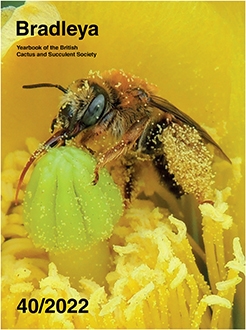Flower colour polymorphism is one of the most attractive features in pollination studies. This article investigates the factors influencing the frequency of flower colour polymorphism in the Cuban cactus Leptocereus scopulophilus, where four flower morphs have been reported. We determined whether the colour of the tepals is a discrete variable and estimated morphs frequency in the population. To explain the frequencies of the flower morphs, we compared their dimensions. We also contrasted pollination success and flower florivory of the most frequent morphs. Leptocereus scopulophilus presents discrete values of tepal colour for all the morphs, including the albino morph reported in this study for the very first time. The light salmon morph is the most frequent in the population. This could be explained by the higher number of ovules and fruits it produces. Pollination in the species is confirmed to be exclusively nocturnal, and florivory is similar for the magenta and light salmon morphs.
How to translate text using browser tools
23 May 2022
Flower morphs in Leptocereus scopulophilus (Cactaceae) and their reproductive success in Pan de Matanzas, Cuba
Duniel Barrios,
David Martínez Llaneras,
José Angel García-Beltrán,
Luis Roberto González-Torres
ACCESS THE FULL ARTICLE

Bradleya
Vol. 2022 • No. 40
May 2022
Vol. 2022 • No. 40
May 2022
Florivory
plant-animal interactions
pollination
polymorphism




